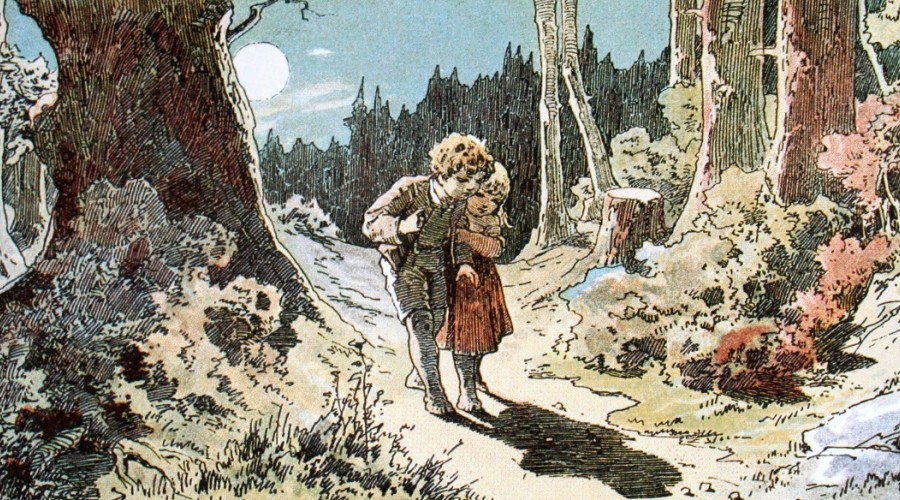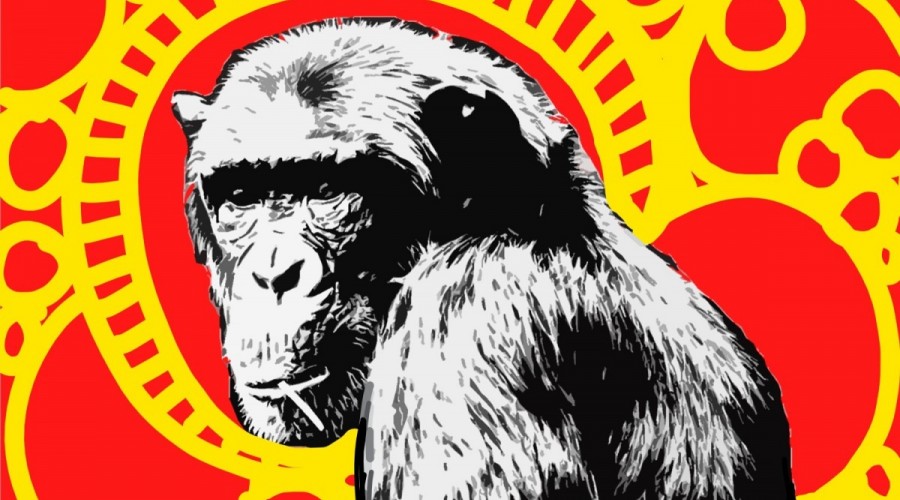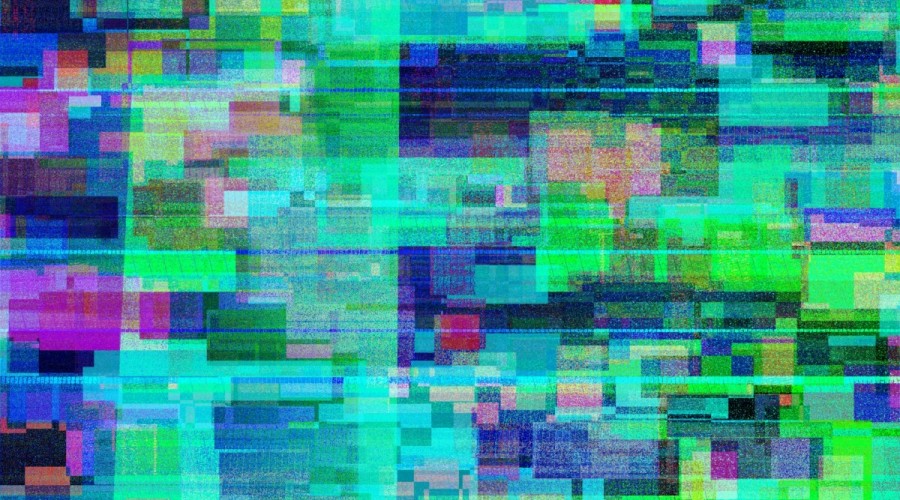
Public domain illustration by Alexander Zick (1845–1907).
Psychology, Enchantment, and the Fairy Tale
For as long as fairy tales have been told, shared, printed, and sold, people have been trying to explain the magic spell they cast over the human imagination. One of the more recent ways in which to interpret and assign meaning to the fairy tale in this sense is the use of the modern discipline of psychology, with an emphasis on Freudian psychoanalysis; in recent years the Jungian tradition has grown, with many analysts following in the footsteps of Marie-Lousie von Franz who brought together folklore and analytical psychology as a unified area of study. The social science of psychology, which developed fairly quickly in the early twentieth century amidst the rise in complexity of the man-made environment, retrieves the fairy tale as an object of study in order to reconcile the interior landscape of the psyche with the new challenges of modern life. It should then be of no surprise that Freudian psychoanalysts and Jungian analytical psychologists alike would appropriate the fairy tale to peer with greater depth into the human psyche.
Freud is perhaps best known for the core tenets of his analytical methodology, for example, the use of myth (as in the “Oedipus complex”) and the analysis of dreams as an entry point into the unconscious, penis envy and oral fixation theories, and the tripartite division of the human psyche into the Id, ego, and super-ego. While always controversial, he is still revered as one of psychology’s founding fathers. One stanza in particular from W.H Auden’s poetic elegy “In Memory of Sigmund Freud” sums up Freud’s legacy of reception succinctly:
or one who’d lived among enemies so long:
if often he was wrong and, at times, absurd,
to us he is no more a person
now but a whole climate of opinion
under whom we conduct our different lives1
Freud’s influence would eventually be felt in both literary criticism and film theory circles alike. Alfred Hitchcock’s seminal film Psycho (1960) would bring the Oedipus complex to pop culture via the big screen of the contemporary cinema.
In 1976, a Freudian analyst named Bruno Bettelheim published The Uses of Enchantment: The Meaning and Importance of Fairy Tales, which according to Maria Warner, “is one of the most influential studies of Fairy Tales ever written.”2 In 1976 Bettelheim’s The Uses of Enchantment won the National Book Critics Circle Award and in 1977 it won the National Book Award for contemporary thought. By 1990 however, Bettelheim’s reputation would be questioned in multiple biographies and through a searing expose by Alan Dundes that revealed many of the ideas in The Uses of Enchantment were lifted from Julius Heuscher’s A Psychiatric Study of Fairy Tales: Their Origin, Meaning and Usefulness (1963).3 It was more than likely Freud’s 1919 paper “The ‘Uncanny’” that steered Bettelheim (and other Freudians for that matter), towards the subject of fairy tales. In “The ‘Uncanny,’” Freud focuses on E.T.A. Hoffmann’s The Sandman as an object of study, indicating a move towards folklore as a source of inspiration rather than classical myth. In this exploration of how emotions can be induced by the subject matter in works of fiction, Freud explicitly refers to fairy tales when he writes, “in fairy-stories feelings of fear—including therefore uncanny feelings—are ruled out altogether.”4
[Bettelheim] stresses the point that adults should deliver them orally to children for the benefit and the mental health of all involved, especially the child.
Writing from the standpoint of a conventional Freudian, Bettelheim’s The Uses of Enchantment is full of psychosexual analyses and Oedipal-infused interpretations of the more common fairy tales found in collections compiled by folklorists including Charles Perrault and the Brothers Grimm, such as “Cinderella,” “Hansel and Gretel,” “Little Red Riding Hood,” “Sleeping Beauty,” and “Snow White.” While Jack Zipes and Alan Dundes offer serious critiques of Bettelheim’s scholarship,5 they both acknowledge that he has made psychoanalytic readings of fairy tales more accessible to a wider public who would otherwise not have a chance to entertain theories of that nature. It may be argued that if there were a positive impact made by Bettelheim’s writing on fairy tales it would be that he stresses the point that adults should deliver them orally to children for the benefit and the mental health of all involved, especially the child, as he notes:
To attain to the full its consoling propensities, its symbolic meanings, and most of all, its interpersonal meanings, a fairy tale should be told rather than read. If it is read, it ought to be read with emotional involvement in the story and in the child, with empathy for what the story may mean to him. Telling is preferable to reading because it permits greater flexibility.6
Within the context of child psychology, Bettelheim’s work honours and respects the sentiments of the oral tradition from which fairy tales sprang.
A student of Carl G. Jung himself, Marie-Louise von Franz would spearhead the Jungian interpretation of fairy tales with a number of publications throughout the 1970s such as The Interpretation of Fairy Tales, Individuation in Fairy Tales, Problems of the Feminine in Fairy Tales, and Shadow and Evil in Fairy Tales. Utilizing a Jungian approach, combined with a close reading of folklore (something Bettelheim neglected to do), von Franz would write about how the archetypes of the collective unconscious manifest symbolically throughout the Western fairy-tale canon. She writes:
The heroes or heroines of fairy tales are abstractions—that is, in our language, archetypes. Therefore, their fates are not neurotic complications, but rather are expressions of the difficulties and dangers given to us by nature.7
In the Jungian tradition, von Franz explains, “fairy tales are the purest and simplest expression of collective unconscious psychic processes.”8 The concept of archetypes is nebulous at best to those unfamiliar with the work of Jung. The collective unconscious is perhaps an easier proposition to attempt an understanding of first, for it is the vessel in which the archetypes are contained much in the same way that the fairy tales are stories in which certain repeating and familiar plot elements are entertained time and time again: this is, of course, the foundation upon which the ATU index was created. The collective unconscious acts as a psychic blueprint inherent in all human beings that is to be understood in contrast to the individual unconscious that is the repository of suppressed thought.
In Jung’s early writings on fairy tales and archetypes—coincidently published in 1919, the same year as Freud’s “The ‘Uncanny’”—he refers to the archetypes as “primordial images” and interprets them as symbols of psychic energy.9 Von Franz shares a similar view, relating the overlapping and fractal nature of an archetype to the photographic technique of multiple exposures, noting that “they can not be disentangled . . . this probably has to do with the relative timelessness and spacelessness of the unconscious.”10 In a later writing entitled “The Phenomenology of the Spirit in Fairy Tales” dating from 1948, Jung lays out a mature assessment of fairy tales within the context of his analytical psychology, and includes a number of his universal archetypal symbols that are reminiscent of the tale-type motifs found in the ATU index.
One of the more astute commentators on the quicksilver complexification of human life in the twentieth century is Marshall McLuhan, a Canadian English professor who attained world-wide recognition with the publication of The Gutenberg Galaxy: The Making of Typographic Man (1962), which won a Governor General Award for literature, and Understanding Media: The Extensions of Man (1964). Not necessarily known for his work with fairy tales, there is an interesting connection. His first book, The Mechanical Bride (1951), was a critique of advertising, a new environment that he defined in the book’s subtitle as the “folklore of industrial man.” Influenced by Cambridge luminaries such as F.R. Leavis and I.A. Richards who were instrumental in developing an early form of cultural studies known as New Criticism, McLuhan would apply their method to the analysis of advertising slogans, images, and ad copy. In 1966, McLuhan would write a short and concise essay about new media environments and their effects, called “The Emperor’s Old Clothes,” which was a subtle nod to Hans Christian Andersen’s original fairy tale. Utilizing Andersen’s theme as a vehicle to drive home the point that the effects of any new medium remain invisible, McLuhan notes, “we can never see the Emperor’s new clothes, but we are staunch admirers of his old garb.”11 In other words, human perception has a penchant for figure, while neglecting to notice the ground of its being.
The premise of Understanding Media is that all human artefacts are considered to be media on McLuhan’s terms, and that all media are extensions of the human being—which includes the human psyche. As a media analyst, McLuhan goes one step further than Freud or Jung in the sense that folklore and fairy tales are human artefacts that can reveal hidden figure/ground relations (a technique that he borrowed from Gestalt psychology), exposing the tensions between the ostensible and the hidden aspects of human characteristics and dynamics on both individual and social bases that exist continuously and simultaneously. According to McLuhan and Powers, the “figure-ground interval” is “where the action is.”12 For example, when reading a fairy tale to a child, the adult is usually the sender of the message and the child the receiver, with the story inhabiting the resonating interval between the two parties. The mature, though infantile, dirty jokes hidden in the ground of fairy tales provide endless entertainment for the adult while the child enters into a state of wonder and fantasy by the provocative stimulation of the figure on their imagination. What Freudian psychoanalysts and Jungian interpreters miss in their assessment of fairy tales in relation to the psyche is that the fairy tale acts as a Rorschach test exposing the content of the analysts’ own unconscious. As a further example, when a Freudian interprets the symbolism of the number three as phallic, representing a triad between the testicles and the penis, they are revealing their own deep-seated phallic fixations. Perhaps Angela Carter’s clever quip about the use of the fairy tale as an instrument to “house-train the Id” is a more poignant observation than ever a Freudian realized, and as such, feminists may have had the last laugh.13
Citation:
Cole, Jarrett. “Psychology, Enchantment, and the Fairy Tale.” Winnsox, vol. 1 (2020).
ISSN 2563-2221



